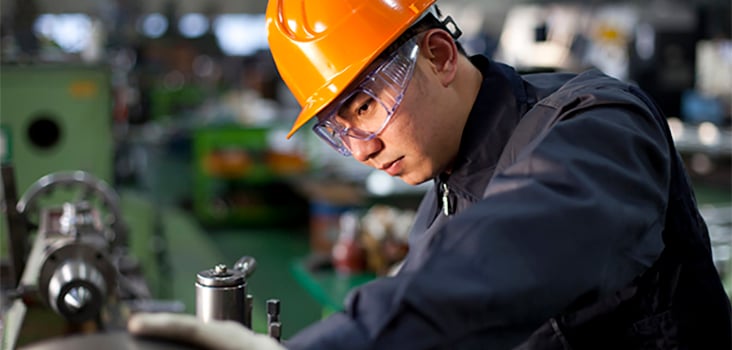
Three Main Causes of Injury in the Manufacturing Industry
Manufacturers are often one step ahead of other industries when it comes to workplace safety. You have to be; your employees work with heavy machinery, hazardous materials, and high levels of noise pollution. Keeping them safe on the job is critical to your bottom line. Knowing why they get injured—and what you can do to prevent it—is just one more part of running a successful business.
In manufacturing, employees typically get injured from one of three sources:
1. Environment
Environment, meaning the surroundings at the workplace, is the most common cause of amputations, cuts, puncture wounds, fractures, dislocations, and skin disorders and diseases. Manufacturing employees often work with heavy machinery and hazardous materials that increase the risk of on-the-job injury or illness. Even light equipment can pose a risk to employees if used incorrectly.
Protective gear, such as reinforced gloves and safety goggles, can help reduce the risk of employee injury. Appropriate on-the-job training—especially regarding equipment function and use—can also help protect employees from job site risks.
Taking action
- Make sure that all of your employees have access to protective gear and know how to use it correctly.
- Make sure your safety signs are brightly colored and easy to understand for employees of all educational levels and cultural backgrounds.
2. Noise
Heavy machinery and manufacturing equipment generate a lot of noise—so much so, many companies often invest in noise-reducing building materials when constructing their facilities. Although this reduces noise pollution in nearby areas, excessive noise is still a challenge on the production floor. According to the US Bureau of Labor Statistics, the manufacturing industry represents around 25% of all claims for noise-induced hearing loss. In 2014, the industry had 13,700 cases of noise-induced hearing loss—more than 300% more than any other industry.
Taking action
- Make sure your employees have the right protective equipment, such as noise-cancelling headsets and other sound-control equipment.
- Post reminders to use protective equipment in high-traffic areas on the production floor, and in break rooms.
3. Tasks
And here’s the third one: what your employees do at work. Manufacturing employees often perform the same physical tasks over and over again throughout the day, which can stress certain muscles and under-use others. This can lead to sprains, strains, and musculoskeletal disorders that not only prevent employees from working effectively—but can also lead to long-term disability.
Taking action
- Ask your occupational medicine provider to send a physician to your workplace to identify potential health risks in how your employees work.
- Work with a physical therapist to create pre-hire fitness tests and stretching programs to reduce muscular strain.
In addition to taking action with the best practices listed above, consult with your insurance carrier and occupational medicine provider. Your insurance carrier can help you understand common losses in your industry and what other manufacturers have found effective. Using this information, you can work with your occupational medicine provider to optimize productivity and protect your employees on the job.
Talk to an expert
Contact one of our workforce experts to find the right workforce health solution for your business—and to see if there are any gaps in your health and safety solution today.



